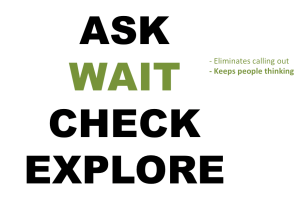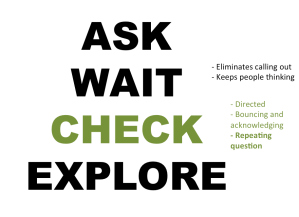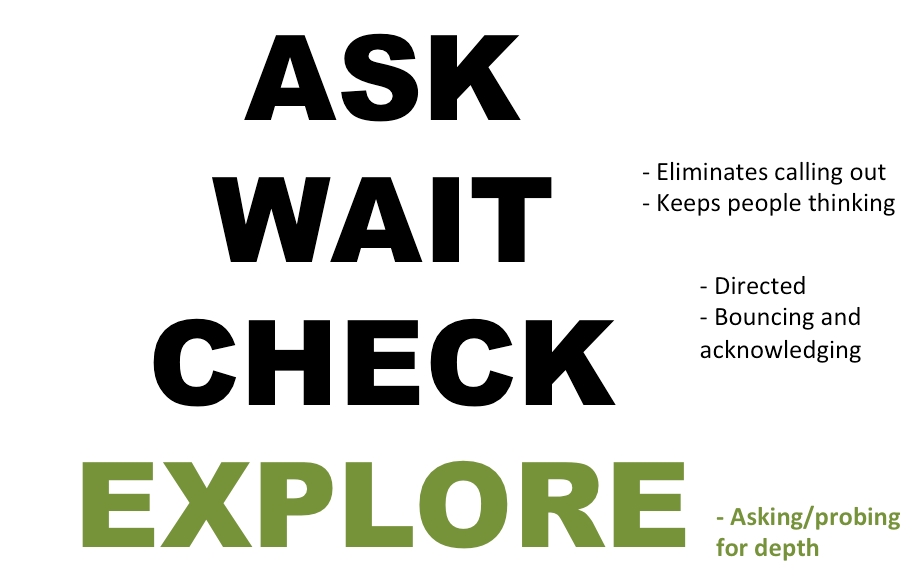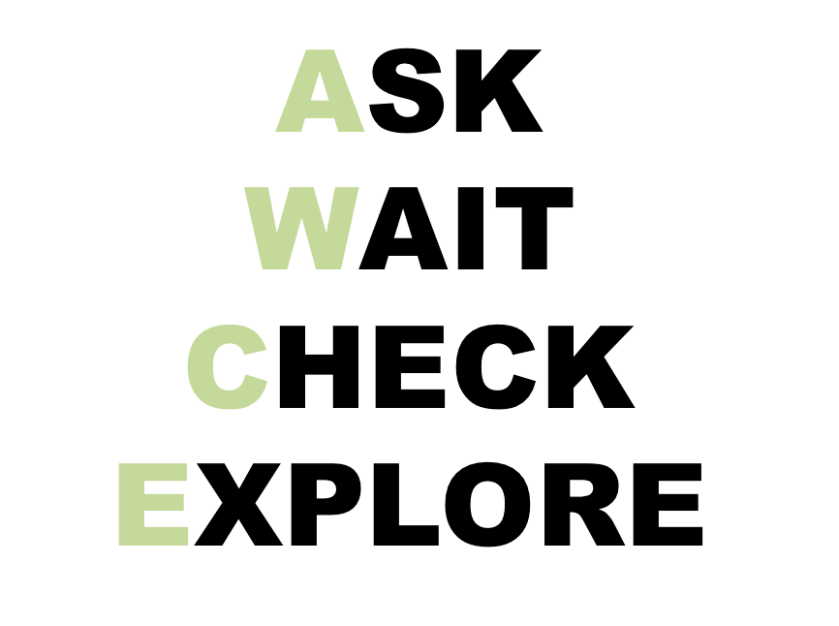Use the AWCE (pronounced ORCE) CODE
Asking questions is an essential part of assessing for learning, and thus good teaching, and yet I think it is a hugely underused skill. The awareness of questioning is there, with a large push resulting in it being covered in most schools’ CPD programmes, but how many teachers can say they are expert in and have mastered the approach? The understanding of effective questioning will always remain superficial unless it is practised repeatedly. It is an art form, and I reiterate: it must be practised many many times in order to master it. Having written about effective questioning strategies before, I think this updated thinking is simplified. I use the AWCE code to scaffold my journey to mastery.

When you ask a question, WAIT at least 5 seconds before you call on a student to answer. This serves 2 purposes: a) it increases the thinking time students have to ponder the question. Students have time to engage with the question, and adjust their thoughts as they process the information further. b) It also prevents calling out, as students realise they won’t be acknowledged anyway. Those with their hands up are encouraged to think that little bit longer, which could allow them to think it through more thoroughly.

After waiting, check students are thinking, and do it in an inclusive way. Ask specific students their thoughts before acknowledging the correct answer, and thank each for their contribution. Bouncing the question around the room helps students maintain focus as they could be called on next, and you can gauge who understands. Repeat the question too so students have full access. To increase the inclusivity of the learning, have students think about a response in pairs, or even 3’s, and allow much more time before calling on answers. This presents an opportunity for students to express what they’re thinking in a safer, less daunting space, and can facilitate deeper thinking as they may need to defend their position, or adjust with new insight offered from their partner/s.

Respond to the answers now, by pushing responses to deeper places. Use other answers as leverage, challenging students’ thinking. Ask students why they thought that, or how they came to their answer. Ask them to challenge other students’ thinking, and ask if they can link it to aspects of previous learning. Having heard several responses, students will naturally process their thoughts, their evaluations forcing either justification, or alteration. This is a powerful, deeper learning moment.
Assessment for learning
The ultimate benefit of the AWCE code, besides a more active learning space, is you being able to gauge how the learning is going, and whether you need to revisit specific concepts or push them into more challenging areas. Learning happens over time and can’t really be gauged in a single session. Ensuring you use retrieval consistently is an effective way to assess whether learning has taken place, and asking questions is a way to continuously retrieve.
This immediate class feedback is invaluable. But when you don’t receive all the signals your class are sending, and you only pick up fragments of the dots and dashes, you can easily feel lost at sea. Learning the AWCE code will help you to attune your ears to the needs of your class, and make you a better educator.
Getting better requires practice
I have the image above as a large A1 poster in my room to help remind me, and the students, to engage in more thoughtful and explicit questioning in every lesson. The link to the quite a few files related to AWCE including the PowerPoint that has the images you can download is here. The immediate file is labelled ‘AWCE code 2’.
Videoing lessons, or having someone observe your lesson, or even asking the students how your questioning went throughout the session are all very valuable in strengthening your skill in asking good questions, and getting the most out of your students’ answers.
Feel free to contact me if you would like the link for the image.
I’m @edmerger

Interesting post. I will definitely be trying this out in the classroom over the next week. I’ll let you know how much success I have with it.
LikeLike
It definitely works
LikeLike